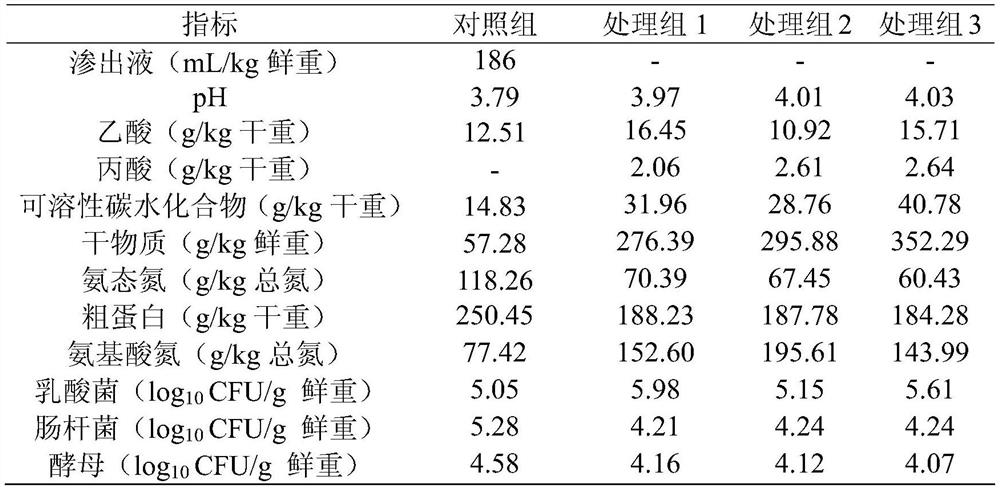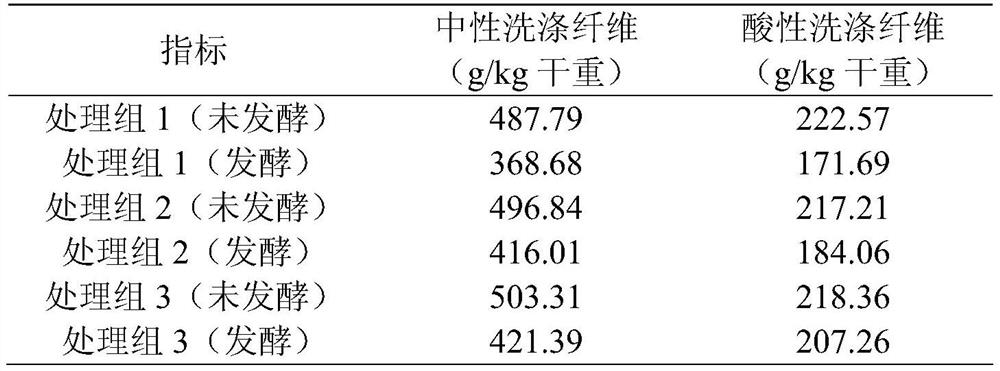Method for turning Brassica pekinensis (Lour.) Rupr. residues into feed by utilizing by-products in powder production industry
A technology for Chinese cabbage and by-products is applied in the field of using the by-products of milling industry to make Chinese cabbage tail vegetables feed, which can solve the problems of reducing the content of fiber substances in wheat bran, increasing the digestibility, and low conversion efficiency, and achieving strong Feasibility and convenience, the effect of reducing fibrous substances and improving utilization efficiency
- Summary
- Abstract
- Description
- Claims
- Application Information
AI Technical Summary
Problems solved by technology
Method used
Image
Examples
Embodiment 1
[0015] Harvest Chinese cabbage tail vegetables in time, its water content is 94%, utilize shredder to cut short to 1-3 centimetre. The chopped Chinese cabbage tails and wheat bran were uniformly mixed in proportion, the water content of wheat bran was 11%, and the mixing ratios of Chinese cabbage tails and wheat bran were 500:0 (control group), 383:117 (treatment group 1 ), 353:147 (treatment group 2) and 323:177 (treatment group 3). Put the fermentation raw materials into an anaerobic fermentation bag with a one-way ventilation valve, compact it, and use a vacuum packaging machine to exhaust the remaining air in the anaerobic fermentation bag. The anaerobic fermentation bag is sealed with a heat sealer, and placed in a dark place for anaerobic fermentation at a room temperature of 20°C. After 60 days of fermentation, Chinese cabbage tail vegetable feed can be obtained.
Embodiment 2
[0017] The preparation method of this example is the same as that of Example 1, except that the temperature of anaerobic fermentation is 25°, and the fermentation is 30 days.
[0018] apply effects
[0019] It can be seen from Table 1 that the treatment group reduced the formation of exudate and the loss of soluble carbohydrates. The treatment group also showed that in addition to meeting the pH value of the excellent anaerobic fermentation feed, it also increased the content of acetic acid, propionic acid, and amino acid nitrogen, and reduced the formation of ammoniacal nitrogen, which proves that the feed produced by this method has excellent fermentation quality and reduced protein degradation. In addition, the treatment group also increased the number of lactic acid bacteria and reduced the number of enterobacteria and yeast, indicating that the Chinese cabbage tail vegetable feed produced by the method of the invention has a certain probiotic effect, and reduces the load...
PUM
 Login to View More
Login to View More Abstract
Description
Claims
Application Information
 Login to View More
Login to View More - R&D
- Intellectual Property
- Life Sciences
- Materials
- Tech Scout
- Unparalleled Data Quality
- Higher Quality Content
- 60% Fewer Hallucinations
Browse by: Latest US Patents, China's latest patents, Technical Efficacy Thesaurus, Application Domain, Technology Topic, Popular Technical Reports.
© 2025 PatSnap. All rights reserved.Legal|Privacy policy|Modern Slavery Act Transparency Statement|Sitemap|About US| Contact US: help@patsnap.com


